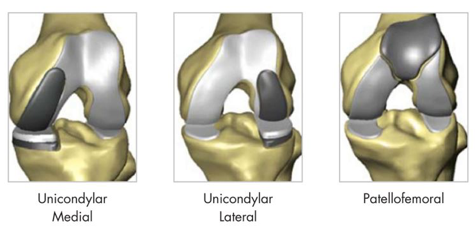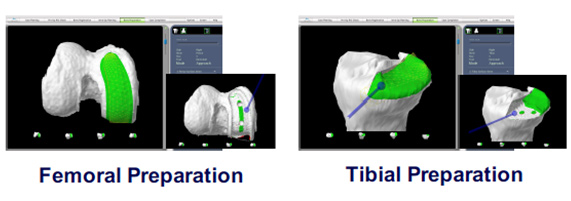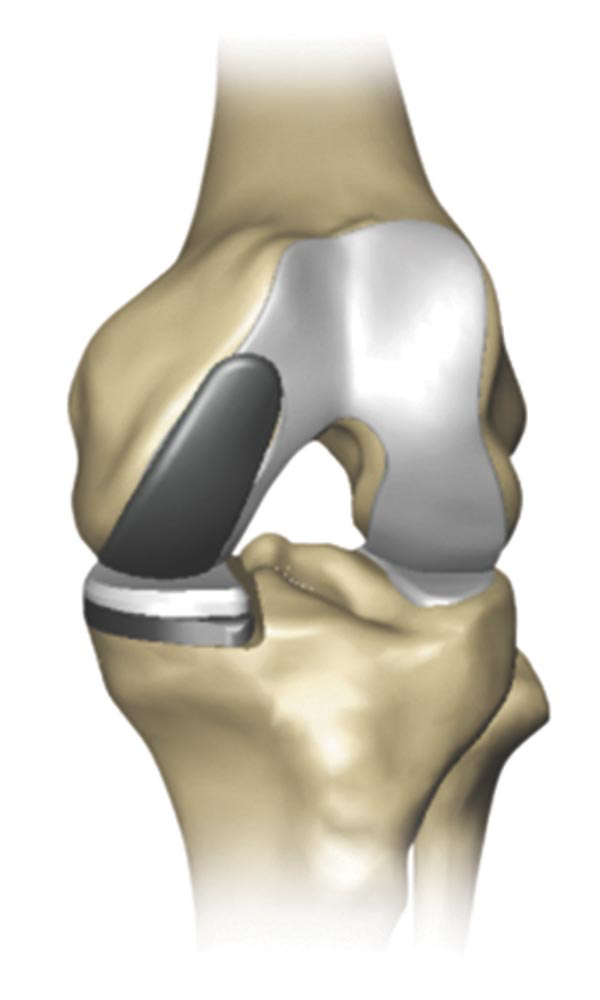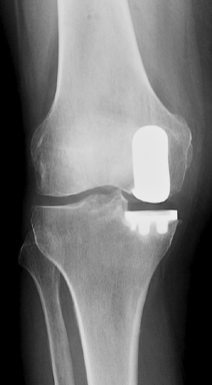Robotic Partial Knee Replacement
What is Robotic Partial Knee Replacement?
Robotic partial knee replacement surgery is a minimally invasive procedure that uses computer technology and robotic arms to help orthopaedic surgeons perform knee surgery with precision and accuracy. The procedure involves removing the damaged part of the affected compartment of the knee joint and replacing it with an implant. The robotic arm assists the surgeon in accurately placing the implant and making precise bone cuts.
MAKO Stryker Uni Video
Who is Suitable for Robotic Partial Knee Replacement?
Robotic partial knee replacement surgery is ideal for patients with osteoarthritis who have only one compartment of their knee joint affected. It is also recommended for patients who have failed to respond to conservative treatments such as medication, physical therapy, and lifestyle changes.
However, not all patients are suitable candidates for this procedure. The orthopaedic surgeon determines the suitability for robotic partial knee replacement surgery based on several factors, including the patient's age, overall health, body weight, lifestyle and the severity of the knee condition.
Who is not Suitable for a Robotic Partial Knee Replacement
The key to the success and longevity of the procedure depends on more than just a good robotic technique. Ideal patient selection for the procedure is critical, and some patients, unfortunately, are not ideal candidates for a robotic partial knee replacement, such as
- Severe deformity or disease
- More than one compartment involved
- High Body Mass Index ( BMI >30-35)
- ACL deficient knee
- Very active lifestyle, involved in high-impact activities
- Rheumatoid arthritis or other systemic joint pathologies
Your surgeon may offer you a total knee replacement with robotic assistance in the above conditions.
What are the Benefits of Robotic Partial Knee Replacement?
There are several benefits to choosing robotic partial knee replacement surgery over traditional knee replacement surgery. Some of these benefits include:
- Increased precision and accuracy: Computer technology and robotic arms ensure the surgery is performed with great precision and accuracy. This reduces human error risk and ensures the implant is placed correctly.
- Minimally invasive: Robotic partial knee replacement surgery is minimally invasive, requiring smaller incisions than traditional knee replacement surgery. This reduces the risk of infection and leads to faster recovery times.
- Fewer Complications: Patients who undergo robotic partial knee replacement surgery typically experience less disease progression or aseptic loosening. The Australian National Joint Registry Report has demonstrated a lower revision rate (second surgery) needed after a robotic partial knee replacement when compared to a Non-Robotic one.
- Faster recovery: Because robotic partial knee replacement surgery is minimally invasive, patients tend to recover faster and can return to normal activities sooner than those who undergo traditional knee replacement surgery.
Types of Robotic Partial Knee Replacement
There are three types of robotic partial knee replacement surgery
- Medial partial ( when the medial compartment only is affected)
- Lateral partial ( when the lateral compartment only is affected)
- Patellofemoral partial ( when the anterior compartment only is affected)

Before Robotic Partial Knee Replacement Surgery
Preparing for a robotic partial knee replacement surgery can help ensure a successful outcome and a smooth recovery. Here are some tips on how to prepare for a robotic partial knee replacement:
- Choose a Skilled Surgeon: The success of your robotic partial knee replacement procedure largely depends on the skill and experience of your surgeon. Look for a surgeon experienced in robotic-assisted surgeries with a good track record of successful outcomes and who has done subspecialty in Robotic Surgery preferably.
- Medical Evaluation: Before your surgery, you must undergo a thorough medical evaluation to ensure you are healthy enough for surgery. This evaluation may include blood tests, imaging tests, and a physical examination.
- Quit Smoking: Smoking can increase the risk of complications during and after surgery. If you are a smoker, quitting smoking at least six weeks before surgery is essential.
- Medication Management: Discuss your medication regimen with your surgeon, and follow their instructions for managing your medications leading up to the surgery. Some medications, such as blood thinners, may need to be stopped before the surgery.
- Prepare Your Home: You may need to modify your home to ensure a safe and comfortable recovery. This may include installing grab bars, raised toilet seats, and a shower chair.
- Arrange for Help: During your recovery period, you may need help with daily activities like cooking and cleaning. Arrange for a friend or family member to help you during this time.
- Plan for Rehabilitation: Rehabilitation is an essential part of the recovery process. Plan for physical therapy and other rehabilitation services before the surgery so that you can start your rehabilitation program immediately after the surgery.
Following these tips can help ensure a successful outcome and a smooth recovery after your robotic partial knee replacement surgery.
During Robotic Partial Knee Replacement Surgery
The procedure begins with the patient being given general and/or spinal regional anaesthesia. Once the patient is asleep, the surgeon will make a small incision in the knee to access the damaged part of the joint.
Next, the surgeon will use a special tool to create a 3D map of the patient's knee joint. This map will be used to guide the robotic arm during the procedure.
The surgeon will then use the robotic arm to precisely burr away only the damaged part of the knee joint and prepare the bone for the implant. The robotic arm uses a high-resolution camera and sensors to provide real-time feedback to the surgeon, allowing them to make precise cuts and adjustments.

Once the damaged part of the joint has been removed, the surgeon will secure the implant to the remaining bone using PolyMethylMethacrylate (PMMA). The implant is designed to fit perfectly in the patient's knee. A High Cross Link Polyethylene (liner) is inserted between the metallic components.

Finally, the surgeon will close the incision, and the patient will be monitored as they recover from the procedure.
After Robotic Partial Knee Replacement
After the surgery, the patient will be monitored in the recovery room to ensure they are stable and have no complications. Pain medication will be prescribed to manage any pain or discomfort. Physical therapy will begin shortly after the surgery to help restore mobility and strength to the knee joint. The length of hospital stay varies from patient to patient, but most patients are discharged within one day after surgery.
Partial Knee Replacement Aftercare Plan
After a robotic partial knee replacement procedure, you must follow a specific aftercare plan to ensure proper healing and recovery. Here are some essential aftercare tips:
- Physical Therapy: Physical therapy is an essential part of the recovery process. Your surgeon will likely recommend physical therapy to help you regain strength, mobility, and range of motion in your knee. Physical therapy exercises will also help to reduce swelling and prevent blood clots. In the first two weeks, they are likely to be home-based exercises. Once you restore mobility and confidence, you can resume attending regular physiotherapy appointments.
- Pain Management: Pain management is essential to recovery after a knee replacement. Your surgeon will likely prescribe pain medication to manage your pain. You should follow your doctor's instructions carefully and take your medicine as directed.
- Rest and Elevation: Rest and elevate your leg as much as possible during the first few days after surgery to reduce swelling and promote healing. Keep your leg elevated above your heart to help reduce swelling.
- Walking: Walking is an essential part of the recovery process. After surgery, you should start walking as soon as possible but don’t overdo it. Follow your physical therapist's instructions and gradually increase the distance and frequency of your walks.
- Follow-Up Appointments: Your surgeon will schedule follow-up appointments to monitor your progress and ensure your knee is healing correctly. Be sure to attend these appointments and follow your surgeon's instructions.
- Diet and Nutrition: A healthy diet and good nutrition are essential for healing and recovery after surgery. Be sure to eat a well-balanced diet and stay hydrated.
Following these aftercare tips can help ensure a successful recovery after a robotic partial knee replacement procedure. Follow your surgeon's instructions carefully and ask questions if you have any concerns or uncertainties.
Prognosis of Robotic Partial Knee Replacement
The prognosis for patients who undergo robotic partial knee replacement surgery is generally favourable. Most patients experience significant pain relief and improved mobility after the surgery. The success of the surgery depends on several factors, including the severity of the knee condition, the patient's overall health, and their commitment to rehabilitation and physical therapy. In general, younger patients with a less severe knee condition and following their rehabilitation program tend to have better outcomes.
Robotic Partial Knee Replacement Risks
As with any surgical procedure, there are risks associated with robotic partial knee replacement surgery. Some of the potential risks include the following:
- Infection: There is a risk of infection after any surgical procedure, including robotic partial knee replacement surgery. The risk can be reduced by following the surgeon's instructions for wound care and taking prescribed antibiotics.
- Blood clots: There is a risk of blood clots forming in the leg after surgery. This can be minimised by wearing compression stockings, getting out of bed and moving around as soon as possible, and taking prescribed blood thinners.
- Implant failure: There is a risk of the implant failing, which may require revision surgery. The risk of implant failure is low, but it can occur due to various factors such as infection, improper positioning of the implant, or wear and tear.
- Progression of Disease: in some cases, you might develop osteoarthritis in the remaining healthy lateral or anterior compartment of you knee. The risk is very low and minimises by using robotic assistance to guarantee accuracy in the correction of the deformity.
- Nerve or blood vessel damage: There is a small risk of nerve or blood vessel damage during the surgery. This can cause numbness, weakness, or decreased sensation in the leg.
Delaying Robotic Partial Knee Replacement
If robotic partial knee replacement surgery is delayed, the knee condition may worsen, leading to more pain, stiffness, and limited mobility. Delayed surgery can also increase the risk of complications and reduce the effectiveness of the surgery. Patients experiencing knee pain should seek medical attention promptly to avoid further damage to the knee joint. In ideal patients, up to 99% may still have their robotic partial knee replacement in 5 years.









